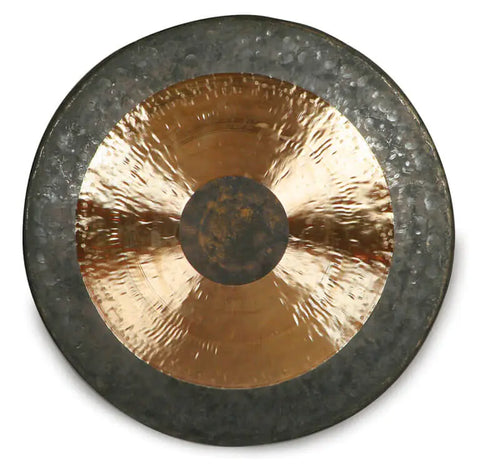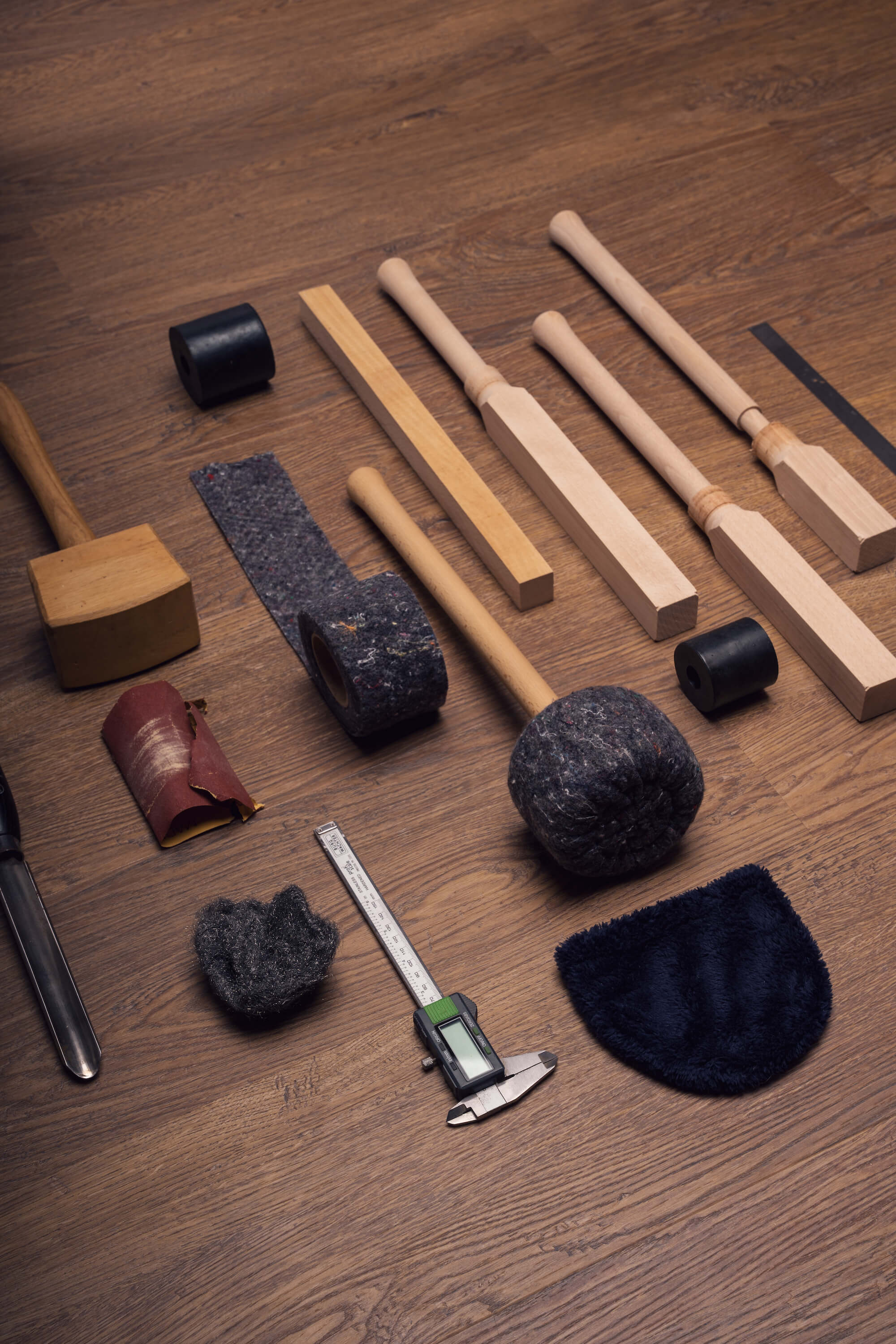The TamTam gong is one of the most popular gong models. Used all over the world, this beautiful and very imposing gong not only impresses with its impressive appearance, but above all with its very powerful sound. The TamTam gong can be used as a musical instrument for quiet and calm tones, but also offers a spectrum of very loud sound nuances. This is exactly what makes the TamTam gong so special: its versatility and its beautiful design, which fits perfectly with our traditional idea of a gong. In Europe, the TamTam Gong (often spelled Tam-Tam Gong) is often referred to as a Chinese temple gong. In Asia, on the other hand, the TamTam Gong is known as the "Chao Gong". But even if the gong has a different name worldwide as a musical instrument, its reverberating sound speaks the same language in every country.
The history of the TamTam Gong
The TamTam gong has a long history that began many centuries before Christ. The oldest model of a TamTam gong found to date comes from China - it dates back to around the 7th century BC. Thanks to its impressive sound and beautiful appearance, the TamTam gong quickly spread beyond China's borders throughout East Asia. At that time, it was common practice in China to put together entire orchestras to play music with melodious metal discs - today's gong. Playing various gongs was an integral part of rituals, celebrations and other occasions, as various excavations have shown. This still shows us today how important the role of the tam-tam gong was in Asia even back then. Over time, however, the tam-tam gong also found its way to Europe. The background to this is not exactly known. However, it is assumed that the Turkish wars in the 17th century brought the now much more advanced form of the TamTam gong to Europe. It was only used for certain occasions - especially mourning ceremonies. Over time, however, the social significance of the tam-tam gong increased more and more, so that it was finally played as a permanent fixture in orchestras for the first time at the beginning of the 20th century. The special feature of the tam tam gong is that it produces a much deeper and firmer sound than other instruments and can therefore give the orchestra a completely new direction. The variety of sounds changed with every object that was used to strike the gong - and the gong became an extremely versatile part of the orchestra. Even today, the gong is still widely used in the professional musical field. Thanks to its relaxing effect and pleasant vibrations, it is also being used more and more in therapeutic and private settings. Find out more about the history of the gong in our blog post.
Beautiful appearance and appealing sound - that's the TamTam Gong
Hardly any other gong has such a powerful sound as the TamTam gong. The extremely impressive sound is primarily based on a very well thought-out combination of materials and shape, which together make up the intensity of this TamTam instrument. The Tam Tam gong is a so-called flat gong, which is usually made of bronze.

The average diameter of a classic TamTam gong is 100 to 150 centimetres, although larger gongs have also been developed in isolated cases throughout history. The TamTam gong is characterized above all by the fact that the edge, which is also clearly defined visually, has been slightly bent to create a particularly strong and impressive sound. The disk of the TamTam instrument usually hangs on a metal stand and is attached to it with various ropes. This allows the gong to vibrate almost freely and achieve particularly beautiful and harmonious pitches.
How is the TamTam gong struck?
If you want to play the TamTam gong, you will of course need the right tools. The good news is that the TamTam instrument can be played with both a gong mallet and a gong driver. So you have the choice of which beautiful tones and nuances you want to play on the gong instrument. Nevertheless, it is also important to choose the right mallets or gong mallets. We at ollihess have developed some products especially for the TamTam gong that make the impressive sound of the gong possible in the first place.
The perfect gong mallet for the TamTam gong
Ideal for this: The Profi Gong Mallet L460, which is also ideal for larger TamTam gongs thanks to its above-average dimensions. With its perfectly tuned and shaped felt head, the Profi Gong Mallet L460 from Olli Hess produces the best possible sound. At the same time, the very soft material ensures that annoying striking noises are avoided and a very pure and unadulterated sound is produced. The warm and earthy tones produced on the gong with the ollihess L460 professional gong mallet are the basis of a harmonious sound that will guide you through all facets of the world of gongs. If you opt for the TamTam chime with a mallet, it produces very deep and vibrating tones that are ideal for sound meditation.
Play the TamTam Gong with the friction mallet
Alternatively, you can of course also use a gong driver to play the TamTam gong as an instrument. This produces much brighter tones, which of course sound a little more harmonious, but less hypnotic and sensual. Our Lava Edition gong drivers, for example, are ideal for playing with the TamTam gong, as their soft caoutchouc head largely prevents striking noises and leaves no marks on the gong thanks to its very soft surface. the friction mallets from the Lava Edition are made by hand from pure natural caoutchouc and, like all our products, are particularly durable.






Leave a comment
This site is protected by reCAPTCHA and the Google Privacy Policy and Terms of Service apply.